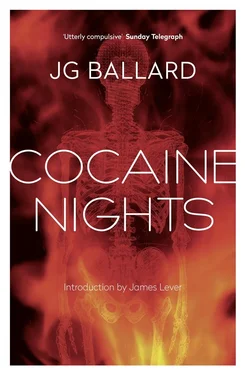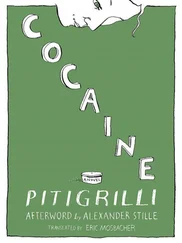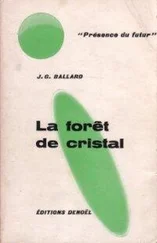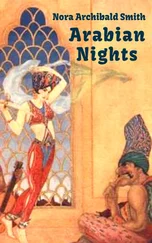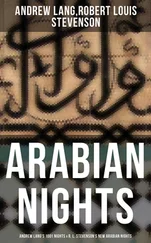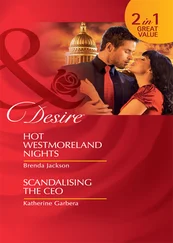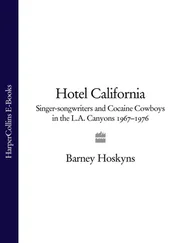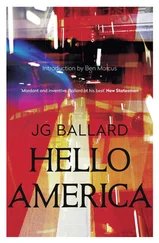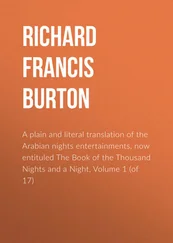Cocaine Nights
J. G. BALLARD
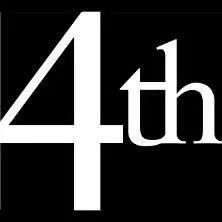
This novel is entirely a work of fiction. The names, characters and incidents portrayed in it are the work of the author’s imagination. Any resemblance to actual persons, living or dead, events or localities is entirely coincidental.
Fourth Estate
An imprint of HarperCollins Publishers Ltd.
1 London Bridge Street
London SE1 9GF
www.harpercollins.co.uk
First published in hardback in Great Britain by Flamingo 1996
Copyright © J. G. Ballard 1996
Introduction copyright © James Lever 2014
Interview copyright © Travis Elborough 2006
Cover by Stanley Donwood.
Photography by Medemea
J.G Ballard asserts the moral right to be identified as the author of this work
A catalogue record for this book is available from the British Library
All rights reserved under International and Pan-American Copyright Conventions. By payment of the required fees, you have been granted the non-exclusive, non-transferable right to access and read the text of this ebook on-screen. No part of this text may be reproduced, transmitted, down-loaded, decompiled, reverse engineered, or stored in or introduced into any information storage and retrieval system, in any form or by any means, whether electronic or mechanical, now known or hereinafter invented, without the express written permission of HarperCollins ebooks
HarperCollins Publishers has made every reasonable effort to ensure that any picture content and written content in this e-book has been included or removed in accordance with the contractual and technological constraints in operation at the time of publication
Source ISBN: 9780006550648
Ebook Edition © JUNE 2012 ISBN: 9780007378814
Version: 2016-10-10
Cover
Title Page
Copyright
Introduction by James Lever
1 Frontiers and Fatalities
2 The Fire at the Hollinger House
3 The Tennis Machine
4 An Incident in the Car Park
5 A Gathering of the Clan
6 Fraternal Refusals
7 An Attack on the Balcony
8 The Scent of Death
9 The Inferno
10 The Pornographic Film
11 The Lady by the Pool
12 A Game of Tease and Chase
13 A View from the High Corniche
14 A Pagan Rite
15 The Cheerleader’s Cruise
16 Criminals and Benefactors
17 A Change of Heart
18 Cocaine Nights
19 The Costasol Complex
20 A Quest for New Vices
21 The Bureaucracy of Crime
22 An End to Amnesia
23 Come and See
24 The Psychopath as Saint
25 Carnival Day
26 The Last Party
27 An Invitation to the Underworld
28 The Syndicates of Guilt
Keep Reading
Interview with J. G. Ballard
About the Author
By the Same Author
About the Publisher
INTRODUCTION BY JAMES LEVER
‘I COULD SUM UP the future in one word,’ J. G. Ballard said in 1994, during an interview collected in Extreme Metaphors , the indispensable anthology of Ballard’s conversation, ‘and that word is boring. The future is going to be boring.’ The gated communities of the Costa del Sol which form the backdrop of Cocaine Nights are the most extreme visualization in his whole body of work of what he elsewhere pictured as ‘the whole planet … turning into a vast Switzerland’. Here, in the ‘fortified enclaves’ where ‘all space has been internalized’, none of the holiday villas even look out to the sea, a hundred yards distant. ‘The residents of the Costa del Sol lived in an eventless world … a world beyond boredom, with no past, no future and a diminishing present … Nothing could ever happen in this affectless realm.’ They are ‘refugees from time … needing only that part of the external world that was distilled from the sky by their satellite dishes … already the ghosts of themselves.’ One of the great and disorienting pleasures of reading Ballard – and especially disorienting in an essentially realistic book like Cocaine Nights – is finding oneself at a loss to identify exactly where the surreal or fantastical begins, or if indeed it even has. Passages that read like wild satirical exaggeration solidify, on second glance, into clear-eyed reportage.
Ballard might have dreamed up these deserted pueblos, ‘their architecture dedicated to the abolition of time’, using the de Chiricos and Hoppers his imagination was stocked with, but in fact he knew the resorts of the Costas well. By the time he wrote Cocaine Nights , he’d been making trips to the Mediterranean for over thirty years, taking annual family holidays in Marbella, and then, when the children had grown up, on the French Riviera with his partner Claire Walsh. ‘I’m always much happier in the south – Spain, Greece – than I am anywhere else,’ he remarked, Englishly. These holidays helped generate several precursors to Cocaine Nights , beginning with the abandoned Costa Brava of ‘Low-Flying Aircraft’ (1975) and the Hitchcockianly erotic ‘The 60 Minute Zoom’ (1976) – two little masterpieces – and then a pair of more closely related stories, ‘Having a Wonderful Time’ (1978) and ‘The Largest Theme Park in the World’ (1989).
The former may well be inspired by the collapse in August 1974 of the Court Line group, pioneers of the cheap-and-cheerful package-tour, which left 50,000 Britons marooned on the beaches of the Med, far from the stagflation and three-day week of home. It describes, via a series of postcards sent by a British tourist ostensibly stranded in the Canaries, the clandestine relocation of the economically superfluous classes of Europe to the continent’s beach-resorts, where these unemployables, unaware of the huge experiment in which they’re participating, blossom into creative fulfilment. The later story inverts the idea: Europe’s holidaymakers refuse to return home, creating a militant totalitarian society based around the cult of physical perfection and occupying ‘the linear city of the Mediterranean coast, some 3,000 miles long and 300 metres wide’ – a typically catchy image Ballard had been chewing over and trying out for fifteen years. And throughout Cocaine Nights you can hear the authorial thrill at the sheer infinity-tending scale of this two-dimensional city – ‘a hundred miles of white cement’, ‘the surfaces of a thousand swimming pools’, ‘fifty thousand Brits, one huge liver perfused by vodka and tonic’, ‘a billion balconies facing the sun’. The coastal megalopolis is a zone of infinite repetition, the sort of non-space that barely possesses any geographical reality at all. But it is also therefore a space vulnerable to sudden and rapidly-spreading psychic contagions. This is the sort of place that excites Ballard – since the greater the homogeneity of an environment or the inner-space of its inhabitants, as with the African desert of The Day of Creation or the Shepperton of The Unlimited Dream Company , the greater the potential transformative energy of the eventual psychic dam-burst. That’s the excitement that powers Cocaine Nights , lined with a dismay which perhaps explains why this particular novel’s iteration of that stock Ballard character, the messianic or psychopathic anti-hero intent on waking a community from its slumber, is one of its author’s most sympathetic utopians.
Читать дальше
